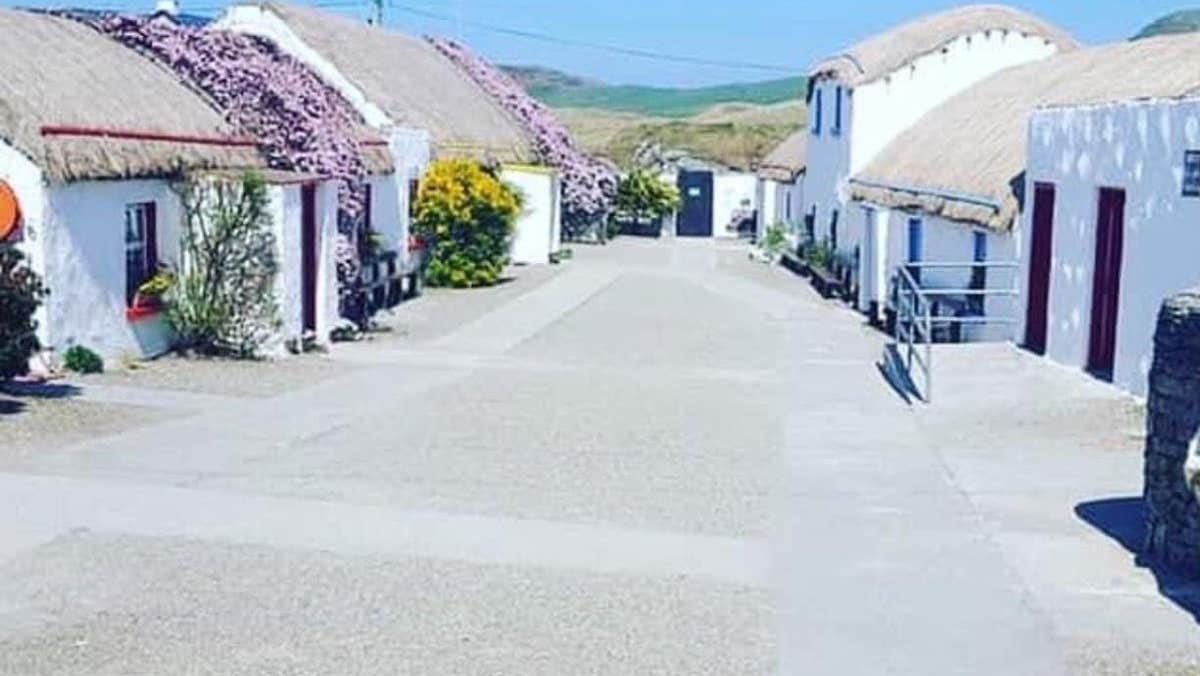Doagh Famine Village tells the story of a Donegal family and community living on the edge of Donegal and surviving from famine times right up to the present day.
A visit here helps explain the road to peace in Northern Ireland, Ireland in the Celtic Tiger years and the current economic collapse.
Doagh Famine Village contains a wide selection of actual size attractions, including some original dwellings which were still inhabited up to 20 years ago. The centre was built around the home of the owner who lived here with his family until 1983. By then, living in a thatched cottage was no longer fashionable and today this building tells of the subsistence way of life on Doagh Island.
Some of the Doagh Famine Village’s buildings, such as the Orange Hall, the Presbyterian Meeting House, the Mass Rock, the Hedge School and a Republican Safe House, depict the diverse history and culture of this corner of the Inishowen Peninsula.
Other buildings house information on the travelling community’s culture and other Irish traditions such as food, cures and the Irish Wake, a traditional send off for the dead.
Doagh Famine Village is designed to suit Irish weather and is predominantly under cover.
